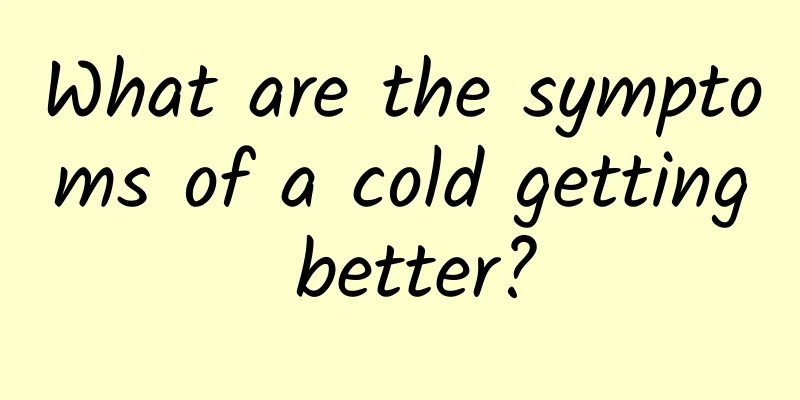What medicine should I take for maxillary arthritis?

|
Arthritis is a very common disease that causes pain in the bones. Mandibular arthritis is also a type of arthritis, which can cause symptoms such as ear pain, pain when chewing, headaches, and sometimes even difficulty swallowing food. What medicine should I take for maxillary arthritis? First of all, we need to know the cause of mandibular arthritis, and then prescribe the right medicine according to the cause, so that mandibular arthritis can get better faster. Temporomandibular arthritis, a condition of the joint where the jaw connects to the ear, is also a common source of pain. Place your fingers in front of the ear canals on both sides and open your mouth wide, and you will hear a sound similar to splitting. Symptoms of TMJ arthritis are very common. These include local joint pain, ear pain, headache, noise and pain when chewing, and are accompanied by pain in various muscles. The ability to open the mouth is limited, and swallowing food is sometimes difficult. 1. Causes of disease 1. Crooked teeth Difficulty in moving the jaw up and down easily may be caused by "misaligned" teeth (what dentists call a bad bite). So the treatment is to make the teeth bite correctly. If your teeth don't fit together properly, it can lead to TMJ. But this is not absolute. Many people have a good bite but suffer from TMJ, while many people do not have TMJ despite crooked teeth. 2. Muscle Imbalance Another cause of TMJ is muscle imbalance. Correction of the bite can help, and the use of mirrors and biofeedback can also relieve symptoms. A muscle imbalance may be caused by the mouth opening to one side. The correct way to open and close your mouth, bite or chew is to let the lower jaw rise and fall along the midline, rather than forcing it to the left or right. In TMJ, a grinding sound or crepitus may be heard when the patient opens his mouth to one side instead of along the midline. This sound is caused by expansion of the joint or wear of the membrane, indicating that the muscles pulling the jaw are not functioning properly and the movement of the jaw is unbalanced. If this is the cause of muscle imbalance, bite correction is necessary. Muscle imbalances can also have other causes. Often people with TMJ will clench their teeth or grind their teeth when they are nervous, just as some people rub their fists and sweat their palms when they are nervous. The more uncomfortable they feel, the tighter they bite; the tighter they bite, the more severe the pain; the more severe the pain, the more anxious they feel and the more nervous they become, which in turn makes them bite tighter, forming a vicious cycle. TMJ patients may also grind their teeth during sleep. 2. Treatment Methods 1. Proteolytic enzyme drug sugar Papaya enzyme extracted from papaya and bromelain extracted from pineapple are two proteolytic enzymes that can be used. Dissolving them between the cheeks and gums in the mouth can help reduce swelling. For example, Clear ease sugar will have a certain effect if taken by chewing three to four times a day. 2. Anti-inflammatory drugs Naproxen sodium, aspirin, and other nonsteroidal medications are effective. 3. Steroids Whether these medications are injected directly into the joint or taken orally, they should be used under the advice of your doctor or dentist. MRI (magnetic resonance imaging) examination can provide the most detailed information about the joint condition and can be used as a reference for treatment. 4. Give your jaw a rest Use a scarf or hatband to support your jaw and take the weight off the jaw joint. Deliver nutrients to the temporomandibular joint cartilage Cartilage regeneration. This may be the fundamental solution to joint diseases and has long been a scientific and technological research topic in the joint medical field. Academic research directions include using platelets to cultivate chondrocytes and using cartilage from other parts of the human body to replace them. Among them, the use of pure natural sawtooth shark cartilage powder to restore human joint cartilage regeneration has become a new medical attempt started by advanced countries since the 1980s because it is simple, safe and effective. In Europe, the extract of saw shark has been recognized as a medicine. In the United States, OAM (Office of Alternative Medicine) also studies and popularizes saw shark cartilage powder as a part of alternative medicine. In Japan, pure natural saw shark cartilage powder is directly used as a part of alternative medicine in clinical practice. The daily dosage of 7.5g is a statistical data from the Japan Shark Cartilage Popularization Association over the past decade. More than a decade of clinical results have confirmed the role of sawtooth shark cartilage powder in regenerating human cartilage, bringing bright hope for humans to completely conquer degenerative arthritis. 3. Treatment principles 1. Infectious arthritis ① Anti-inflammatory treatment: perform drug sensitivity test and choose antibiotic treatment. ② When an abscess is formed, incision and drainage should be performed. ③After the inflammation subsides, you should practice opening your mouth and undergo physical therapy to prevent joint stiffness. 2. Traumatic arthritis ① Local rest, physical therapy, and analgesia. Give antibiotics to prevent secondary infection. ② If there is effusion or hematoma, it should be aspirated. After the inflammation subsides, 0.5-1.0 ml of prednisolone should be injected into the joint cavity. 3. Degenerative arthritis ①Repair missing teeth to restore normal chewing function. ②Physical therapy: irradiation with infrared rays or helium-neon laser. ③Intra-articular injection of prednisolone (prednisolone) 0.5-1ml, once a week. One course of treatment is 3 times. 4. Rheumatoid arthritis ①Physical therapy: irradiation with infrared rays or helium-neon laser. ②Drug treatment: Oral salicylic acid drugs such as phenylbutazone, indomethacin (indomethacin), ibuprofen, etc. Hormones such as hydrocortisone acetate can be injected into the joint cavity for treatment. |
>>: What medicine is effective for frontal sinusitis
Recommend
How to treat cracked lips
I believe many people have had this experience. I...
What to do if your skin is red and itchy? An old Chinese doctor tells you a folk remedy
Sometimes, people may experience redness and itch...
The efficacy and function of Baijie leaves
From ancient times to the present, sweet-scented ...
Melanoma on the foot
Many people cannot distinguish between melanoma a...
How to drink dandelion leaves in water
Dandelion is a very common plant in our lives. It...
What are the sequelae of cerebral hemorrhage?
Sudden cerebral hemorrhage has become a common th...
The difference between Sichuan saffron and saffron
The main difference between Sichuan saffron and s...
What soup is good for bad breath?
With the continuous development of medical techno...
Is it normal to have menstruation at the age of eleven?
Girls will start menstruating when they reach a c...
Self-treatment of cervical pain
One of the more obvious symptoms of cervical spon...
The difference between upper and lower tooth extraction
If the growth of wisdom teeth affects your health...
How should people with qi deficiency maintain their health?
Qi deficiency constitution is a type of deficienc...
What is the best medicine for chronic proctitis and how long will it take to cure?
Patients with chronic proctitis need to always re...
What are the symptoms of liver problems?
If the liver is not in good condition, it can act...
Anal pain during bowel movement
If you experience anal pain during bowel movement...









